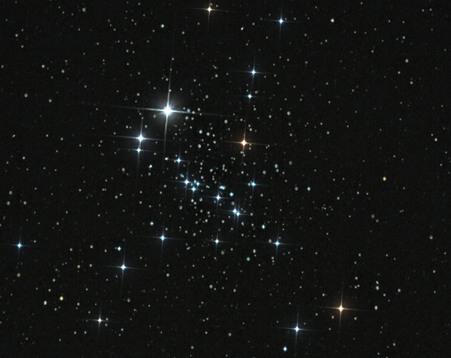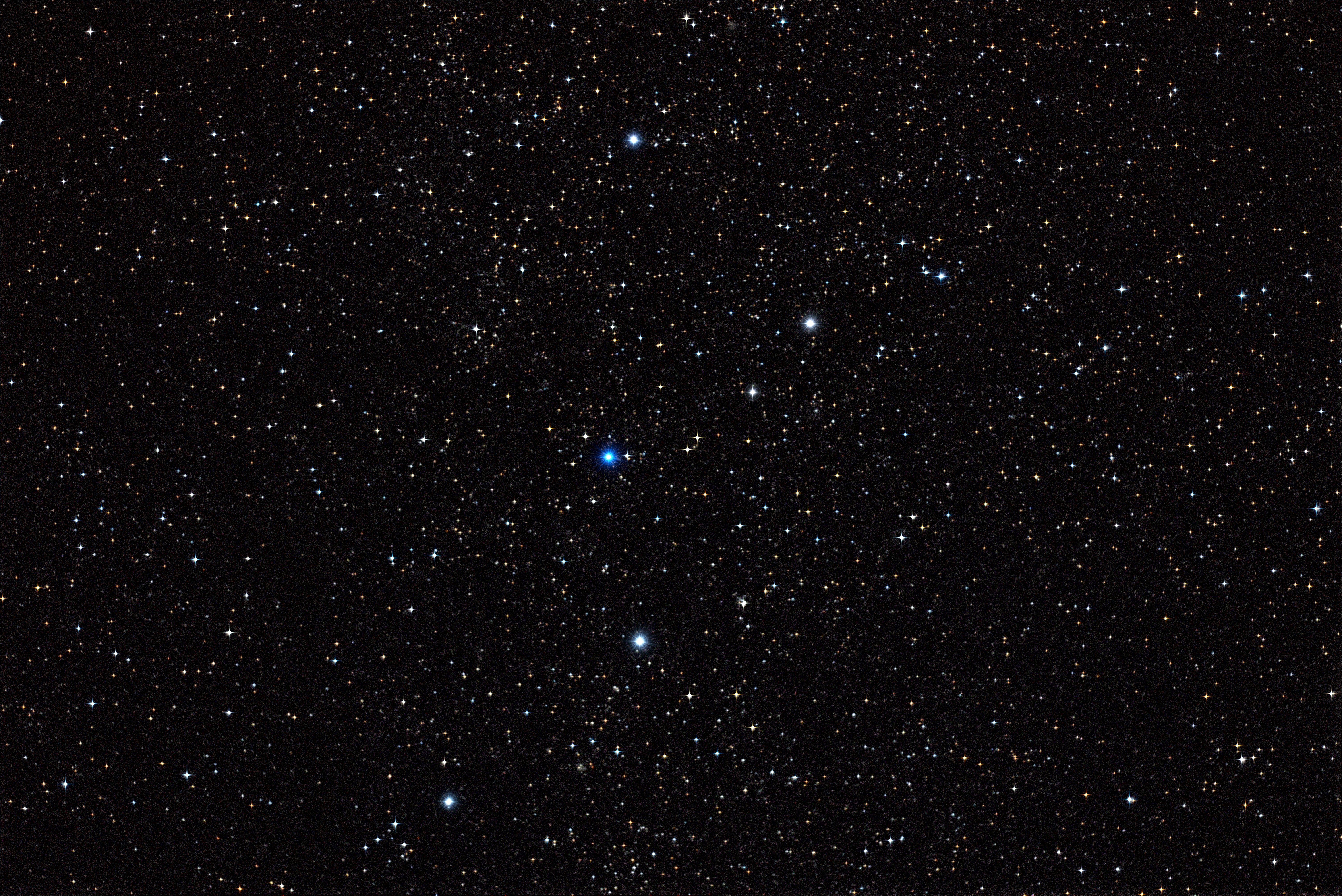|
NGC 457
NGC 457 (also designated Caldwell 13, and known as the Dragonfly Cluster, E.T. Cluster, Owl Cluster, Kachina Doll Cluster or Phi Cassiopeiae Cluster) is an open cluster, open star cluster in the constellation Cassiopeia (constellation), Cassiopeia. Discovery It was discovered by William Herschel on August 18, 1780, with a 6.2 inch reflector telescope, and catalogued as VII 42. Visibility It is an easy target for amateur astronomers, and can be seen even with small telescopes in light-polluted skies. Characteristics It lies over 7,900 light years away from the Sun. It has an estimated age of 21 million years. The cluster is sometimes referred by amateur astronomy, amateur astronomers as the ''Owl Cluster'' or the ''E.T. the Extra-Terrestrial, E.T. Cluster'' (due to its resemblance to the movie character). Two bright stars Phi Cassiopeiae (magnitude 5 and spectral type F0) and HD 7902 (magnitude 7) can be imagined as eyes. It is not yet clear if Phi Cassiopeiae is a member ... [...More Info...] [...Related Items...] OR: [Wikipedia] [Google] [Baidu] |
Phi Cassiopeiae
Phi Cassiopeiae (φ Cas, φ Cassiopeiae) is a multiple star in the constellation Cassiopeia with a combined apparent magnitude of +4.95. The two brightest components are A and C, sometimes called φ1 and φ2 Cas. φ Cas A is an F0 bright supergiant of magnitude 4.95 and φ Cas C is a 7.08 magnitude B6 supergiant at 134". System φ Cassiopeiae appears among the stars of the open cluster NGC 457, which is at 2,400pc, but it is uncertain whether it is a member of the cluster. φ Cas is generally treated as having five component stars, designated A to E in order of distance from the brightest star. The two components A and C are the brightest members of NGC 457; they are sometimes referred to as φ1 and φ2 Cassiopeiae. Component B is a 12th magnitude star 49" from φ1. Components D and E and both 10th magnitude B-type main sequence stars in NGC 457, with component E only 42" from φ2. Another three components are sometimes listed as components of the multiple system, altho ... [...More Info...] [...Related Items...] OR: [Wikipedia] [Google] [Baidu] |
NGC Objects
The ''New General Catalogue of Nebulae and Clusters of Stars'' (abbreviated NGC) is an astronomical catalogue of deep-sky objects compiled by John Louis Emil Dreyer in 1888. The NGC contains 7,840 objects, including galaxies, star clusters and emission nebulae. Dreyer published two supplements to the NGC in 1895 and 1908, known as the ''Index Catalogues'' (abbreviated IC), describing a further 5,386 astronomical objects. Thousands of these objects are best known by their NGC or IC numbers, which remain in widespread use. The NGC expanded and consolidated the cataloguing work of William and Caroline Herschel, and John Herschel's '' General Catalogue of Nebulae and Clusters of Stars''. Objects south of the celestial equator are catalogued somewhat less thoroughly, but many were included based on observation by John Herschel or James Dunlop. The NGC contained multiple errors, but attempts to eliminate them were made by the ''Revised New General Catalogue'' (RNGC) by Jack W. ... [...More Info...] [...Related Items...] OR: [Wikipedia] [Google] [Baidu] |
Open Clusters
An open cluster is a type of star cluster made of tens to a few thousand stars that were formed from the same giant molecular cloud and have roughly the same age. More than 1,100 open clusters have been discovered within the Milky Way galaxy, and many more are thought to exist. Each one is loosely bound by mutual gravitational attraction and becomes disrupted by close encounters with other clusters and clouds of gas as they orbit the Galactic Center. This can result in a loss of cluster members through internal close encounters and a dispersion into the main body of the galaxy. Open clusters generally survive for a few hundred million years, with the most massive ones surviving for a few billion years. In contrast, the more massive globular clusters of stars exert a stronger gravitational attraction on their members, and can survive for longer. Open clusters have been found only in spiral and irregular galaxies, in which active star formation is occurring. Young open clusters may ... [...More Info...] [...Related Items...] OR: [Wikipedia] [Google] [Baidu] |
NGC 457 Map
NGC may refer to: Companies * NGC Corporation, the name of US electric company Dynegy, Inc. from 1995 to 1998 * National Gas Company of Trinidad and Tobago, a state-owned natural gas company in Trinidad and Tobago * National Grid plc, a former name of National Grid Electricity Transmission plc, the operator of the British electricity transmission system * Northrop Grumman Corporation, an aerospace and defense conglomerate formed from the merger of Northrop Corporation and Grumman Corporation in 1994 * Numismatic Guaranty Company, a coin certification company in the United States * National Garden Clubs, headquartered in St. Louis, Missouri * Network General Corporation, a defunct networking hardware company Other uses * National Gallery of Canada, an art gallery founded in 1880 in Ottawa, Canada * National Games of China, the national multi-sport event of China * National Geographic (American TV channel), a documentary and reality television channel established in the United States ... [...More Info...] [...Related Items...] OR: [Wikipedia] [Google] [Baidu] |
Variable Star
A variable star is a star whose brightness as seen from Earth (its apparent magnitude) changes systematically with time. This variation may be caused by a change in emitted light or by something partly blocking the light, so variable stars are classified as either: * ''Intrinsic variables'', whose luminosity actually changes periodically; for example, because the star swells and shrinks. * ''Extrinsic variables'', whose apparent changes in brightness are due to changes in the amount of their light that can reach Earth; for example, because the star has an orbiting companion that sometimes eclipses it. Many, possibly most, stars exhibit at least some oscillation in luminosity: the energy output of the Sun, for example, varies by about 0.1% over an 11-year solar cycle. Discovery An ancient Egyptian calendar of lucky and unlucky days composed some 3,200 years ago may be the oldest preserved historical document of the discovery of a variable star, the eclipsing binary Algol. A ... [...More Info...] [...Related Items...] OR: [Wikipedia] [Google] [Baidu] |
Red Supergiant
Red supergiants (RSGs) are stars with a supergiant luminosity class ( Yerkes class I) and a stellar classification K or M. They are the largest stars in the universe in terms of volume, although they are not the most massive or luminous. Betelgeuse and Antares A are the brightest and best known red supergiants (RSGs), indeed the only first magnitude red supergiant stars. Classification Stars are classified as supergiants on the basis of their spectral luminosity class. This system uses certain diagnostic spectral lines to estimate the surface gravity of a star, hence determining its size relative to its mass. Larger stars are more luminous at a given temperature and can now be grouped into bands of differing luminosity. The luminosity differences between stars are most apparent at low temperatures, where giant stars are much brighter than main-sequence stars. Supergiants have the lowest surface gravities and hence are the largest and brightest at a particular temperature. ... [...More Info...] [...Related Items...] OR: [Wikipedia] [Google] [Baidu] |
Rigel
Rigel is a blue supergiant star in the constellation of Orion. It has the Bayer designation β Orionis, which is Latinized to Beta Orionis and abbreviated Beta Ori or β Ori. Rigel is the brightest and most massive componentand the eponymof a star system of at least four stars that appear as a single blue-white point of light to the naked eye. This system is located at a distance of approximately . A star of spectral type B8Ia, Rigel is calculated to be anywhere from 61,500 to 363,000 times as luminous as the Sun, and 18 to 24 times as massive, depending on the method and assumptions used. Its radius is more than seventy times that of the Sun, and its surface temperature is . Due to its stellar wind, Rigel's mass-loss is estimated to be ten million times that of the Sun. With an estimated age of seven to nine million years, Rigel has exhausted its core hydrogen fuel, expanded, and cooled to become a supergiant. It is expected to end its life as a typeII su ... [...More Info...] [...Related Items...] OR: [Wikipedia] [Google] [Baidu] |
Amateur Astronomy
Amateur astronomy is a hobby where participants enjoy observing or imaging celestial objects in the sky using the Naked eye, unaided eye, binoculars, or telescopes. Even though scientific research may not be their primary goal, some amateur astronomers make contributions in doing citizen science, such as by monitoring variable stars, double stars, sunspots, or occultations of stars by the Moon or asteroids, or by discovering transient astronomical events, such as comets, galactic novae or supernovae in other galaxy, galaxies. Amateur astronomers do not use the field of astronomy as their primary source of income or support, and usually have no professional degree in astrophysics or advanced academic training in the subject. Most amateurs are hobbyists, while others have a high degree of experience in astronomy and may often assist and work alongside professional astronomers. Many astronomers have studied the sky throughout history in an amateur framework; however, since the be ... [...More Info...] [...Related Items...] OR: [Wikipedia] [Google] [Baidu] |
Cassiopeia (constellation)
Cassiopeia () is a constellation and Asterism (astronomy), asterism in the northern sky named after the vain queen Cassiopeia (mother of Andromeda), Cassiopeia, mother of Andromeda (mythology), Andromeda, in Greek mythology, who boasted about her unrivaled beauty. Cassiopeia was one of the 48 constellations listed by the 2nd-century Greek astronomer Ptolemy, and it remains one of the 88 modern constellations today. It is easily recognizable due to its distinctive 'W' shape, formed by five bright stars. Cassiopeia is located in the northern sky and from latitudes above 34th parallel north, 34°N it is visible year-round. In the (sub)tropics it can be seen at its clearest from September to early November, and at low southern, tropical, latitudes of less than 25th parallel south, 25°S it can be seen, seasonally, low in the North. At magnitude 2.2, Alpha Cassiopeiae, or Schedar, is the brightest star in Cassiopeia. The constellation hosts some of the most luminous stars known, inclu ... [...More Info...] [...Related Items...] OR: [Wikipedia] [Google] [Baidu] |
William Herschel
Frederick William Herschel ( ; ; 15 November 1738 – 25 August 1822) was a German-British astronomer and composer. He frequently collaborated with his younger sister and fellow astronomer Caroline Herschel. Born in the Electorate of Hanover, William Herschel followed his father into the military band of Hanover, before immigrating to Kingdom of Great Britain, Britain in 1757 at the age of nineteen. Herschel constructed his first large telescope in 1774, after which he spent nine years carrying out sky surveys to investigate double stars. Herschel published catalogues of nebulae in 1802 (2,500 objects) and in 1820 (5,000 objects). The resolving power of the Herschel telescopes revealed that many objects called nebulae in the Messier object, Messier catalogue were actually clusters of stars. On 13 March 1781 while making observations he made note of a new object in the constellation of Gemini. This would, after several weeks of verification and consultation with other astrono ... [...More Info...] [...Related Items...] OR: [Wikipedia] [Google] [Baidu] |








